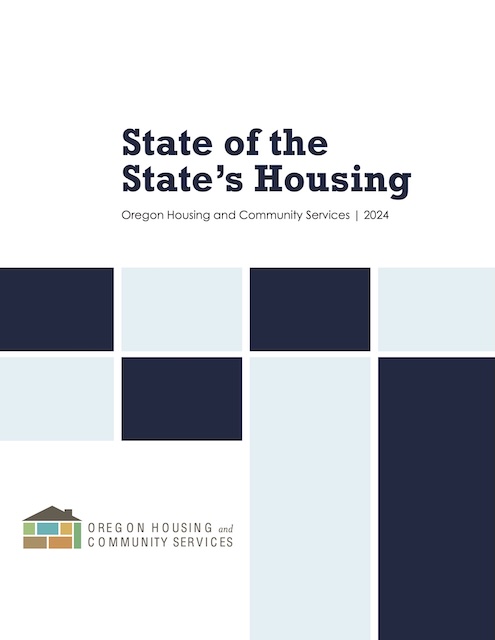Nearly two years ago, Oregon’s Governor Tina Kotek set a target of increasing the number of homes built in Oregon each year from 22,000 to 36,000. At the time, I argued that the subsidies Kotek was proposing wouldn’t work, partly because builders would respond to new subsidized homes by reducing market-rate home construction.
 Click image to download a 3.4-MB PDF of this report.
Click image to download a 3.4-MB PDF of this report.
A recent report from the state’s office of Housing and Community Services finds that the situation is worse than I thought. The state and local governments have spent $2.2 billion subsidizing new housing, mostly since 2020. Yet the most recent data indicate that the number of new homes constructed each year is no greater than it was before. Although demand for housing has fallen because so many people are leaving the state due to high housing prices, housing is considerably less affordable today than it was in 2020.
The report makes a big deal about how high housing prices create special hardships for “BIPOC,” a term I hadn’t heard before meaning “Black, Indigenous, and People of Color.” I’ve been pointing out for years that high housing prices create particular hardships for low-income families including many blacks and other minorities. Yet nothing proposed by either Kotek or the office of Housing and Community Services addresses the real problem: Oregon’s urban-growth boundaries.
Controversially, Kotek recently proposed to make a “massive expansion” to Portland’s urban-growth boundary in order to make room for a new Intel chip plant. Intel’s existing plant in the Portland suburb of Hillsboro employs thousands of people, but Oregon politicians were shocked when Intel decided to build its next new plant in Ohio instead of Oregon.
Kotek’s flexibility regarding the growth boundary for Intel makes it clear that she realizes the boundary creates problems for new developments. But she has been unwilling to admit that the same problem exists for housing. Moreover, growth-management advocates are completely out of touch with reality if they think Kotek’s proposed boundary expansion is “massive” as it is only 400 acres.
Growth-management advocates have always said that high housing prices are driven by demand, not supply. If demand is down, then now is the time for Oregon to abolish its growth boundaries and other growth-management rules. This will make housing more affordable for people who don’t already own their own homes. If those who do own their homes see the value of those homes fall, the state can just blame it on reduced demand.








Just asking … is new housing a net expense while new factories are a net profit for the city? Or are they both a net profit but new factories are more profitable than houses?
I foresee a trip to upstate NY in AP’s future to murder this project in the cradle:
https://www.newsweek.com/new-york-toronto-high-speed-rail-link-1988787
If you think this is bad, wait until you analyze the situation in Brooklyn and the Bronx.
rovingbroker,
When combined with the taxes paid by the commercial development (retail, services, etc.) that goes with it, taxes paid by new housing development generally covers the costs of urban services that homes use. It varies from state to state but studies finding that housing doesn’t cover its costs usually ignore the taxes paid by the commercial developments that come with that housing.